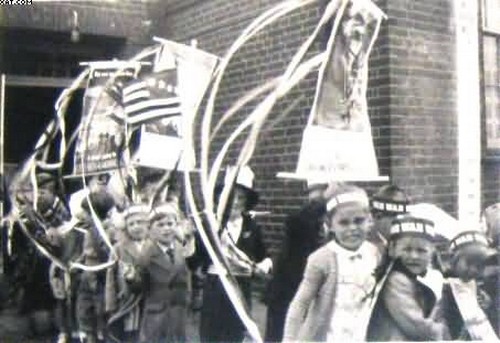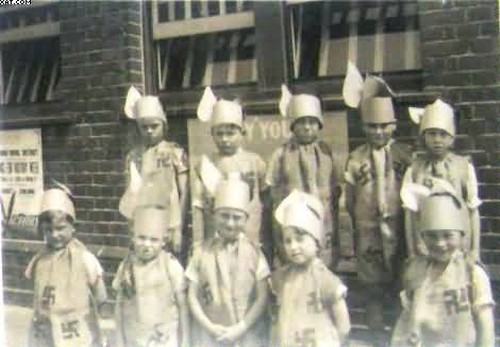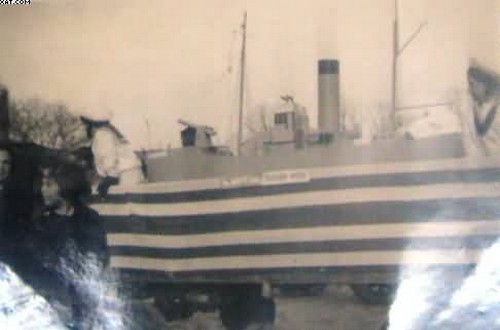The Years of War
The South African War (1899-1902) seems to have affected the village but little. This is not surprising, for in the tree days before the coming of air travel and wireless, South Africa was, indeed, a very long way away. Records tell us, however, that, as usual, Cliffe contributed well to the “War Fund”, and that there were several men from the village involved in the ‘Boer’ war.
By the time of the outbreak of the First World War things were very different, and war was brought home to the villagers just as poignantly as to town-dwellers. Immediately, over 50 men serving in “Regulars” in the Army or the Navy, and 50 Reservists and Territorials were called up.
The Rector placed the Rectory as the disposal of the military authorities as a hospital, and his motor-car at their disposal, he himself volunteering as a Special Constable, together with over 40 other men.
A War Relief Fund was opened, and this, by the time the war was over had reached the total of £3,362.
The war soon began to take its toll, and the first Cliffe men to lose their lives were Mr. Foord and Mr. J. Chivers, who were lost when H.M.S.’s Aboukin, Cressy & Hague were torpedoed.
The old Wesleyan Chapel was opened as a Soldier’s Recreation room for the convenience of servicemen stationed in the village, later a Soldiers Rest Room was opened at Higham Road.
Christmas Day, 1914 saw what is still believed to be the first aerial battle over British soil take place over Cliffe. On this occasion two bombs were dropped, near Mortimer’s Farm, and south of Cliffe Railway Station, fortunately without casualty. Many were the disturbed nights suffered by the village when Zeppelins were about, but the arrival of a “German Balloon captured on the marshes” (to quote from a newspaper at the time) was unheralded. It was true, but where it came from, or how it got to the marshes, has remained a mystery.
During the war many of our ‘boys’ received decorations, among them three Morrison boys – Andrew, the D.C.M., and Robert and George the M.M. (in 1916 Mr. & Mrs. A Morrison received a letter from H.M. The King, commenting on the fact that they had six sons serving in the forces).
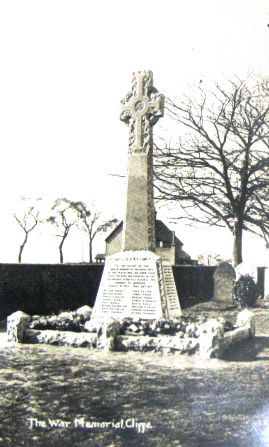
A war shrine, showing the names of those serving from the village was erected near the Churchyard gate, and after the erection of the War Memorial just inside the churchyard, the shrine was moved to the church porch. The memorial, unveiled on 15th February, 1920, is in the form of an Iona Cross, of Aberdeen granite, and bears the inscription “To the Glory of God and in memory of those brave men of this parish who laid down their lives for King and Country in the victorious struggle against the enemies of mankind – August 4th 1914 to June 28th 1919.”and thereon are 47 names of those who fell. A bronze tablet to the memory of the two members of the Cricket Club was placed in the pavilion of the Cricket Club.
Peace celebrations were held in the village on 19th July 1919 and some time later medals were presented to Special Constables.
The outbreak of the Second World War was proceeded by a long period of uneasiness which seems to have started with an Air Raid Precautions meeting held at the “Globe” Cinema in May, 1937, and in August of the following year the first A.R.P. examinations were held, and 19 ladies were awarded Fist Aid Certificate, a little later “Specials” were again enrolled, and recruitment started for wardens. The “Alpha” Cement Works offered their underground workings as air raid shelters, and it was announced that gas masks were ready.
Immediately on the outbreak of war in September 1939 the hall of the Men’s’Club was taken over for A.R.P. and turned into a first aid post. No children under the age of 7 were allowed to attend school, and all other pupils attended in two ‘shifts’ so that not more than 60 pupils were upon the premises at any one time.
Local members of the Royal Observer Corps were already on duty, a strong body of Home Guard was formed. In 1941 volunteers were enrolled for fire-fighting. Again our nights were often broken by the sound of gunfire, or the explosion of bombs, quite a number of them landing in various parts of the village, but causing a lot of damage. Far more damage was caused in 1942 when one of our own aeroplanes crashed on a row of houses in Rye Street, and Mrs. L. M. McPherson lost her life. A relief fund was opened for the residents of Rye Street, which realises £106, which it was agreed, should be shared with an elderly couple whose home in Longford Place had suffered damage earlier in the war.
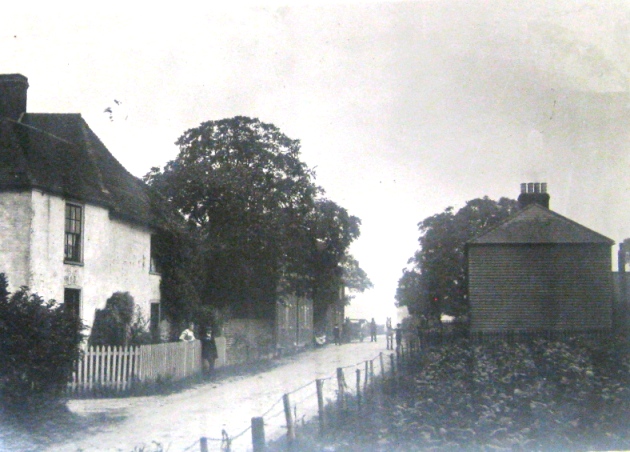
Almost all houses shown on the left of this photograph were destroyed in the incident related above.
Coincidently more damage was also sustained on 1st July 1944, when a V1 (doodle-bug) fell in a field between Cooling Road and Millcroft Road. Hardly a window remained intact in those two roads, and St. Helen’s Terrace and May cottages, and i addition many ceilings were down and roofs stripped. Fortunately personal injury was very slight. When the enemy stared using the V1 Cliffe, in common with numerous other places had a barrage of dozens of balloons hoisted in the sky above it. These balloon stations were, for the most part, manned by Polish servicemen, and aroused great curiosity among the young folk. After the V1’s came the V2’s, but the only one to fall in Cliffe came to rest in Cliffe Woods, and caused very little damage.
By the Spring of 1945 victory was in sight, and the British Legion opened a “Welcome Home” Fund to do just that. May and June saw “Victory” teas being held throughout the village, and a Thanksgiving Service was held at the Church. During the war a number of different “weeks” were held, and each was a great financial success: - “War Weapons” Week realised £19,844, “Warship” Week £13,330; “Wings for Victory”Week £17539; and “Salute the Soldiers” Week £15,119 (Included in these amounts are sums totalling over £1,541 donated as “free gifts” for various charities.
Towards the end of 1949 the names of those who fell in the 1939-1945 war were inscribes on a panel on the War Memorial. And this was unveiled by Col. R.M.W. Marsden, of Cooling Castle. A tablet was also unveiled to the memory of members of the Men’s Club who lost their lives.
